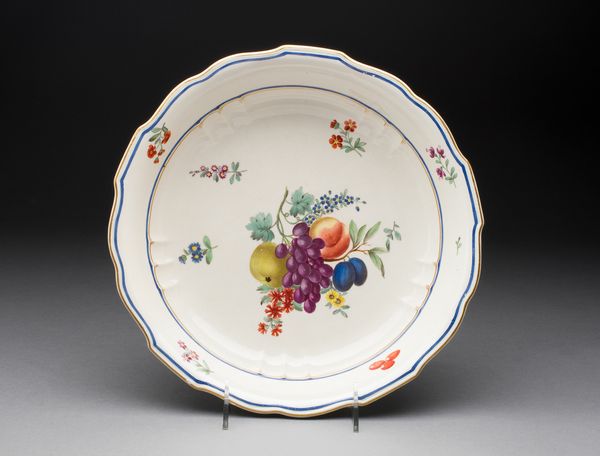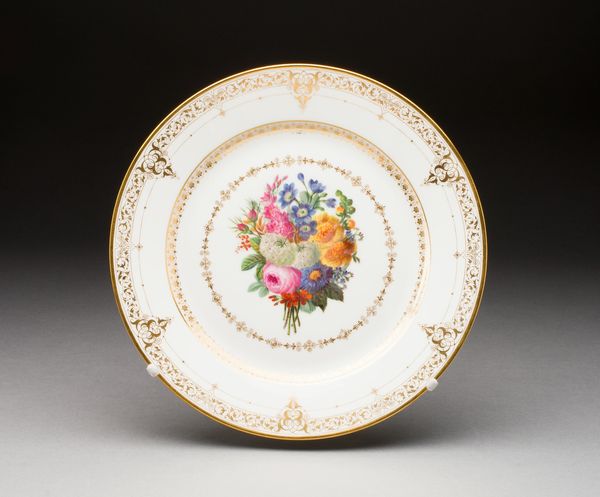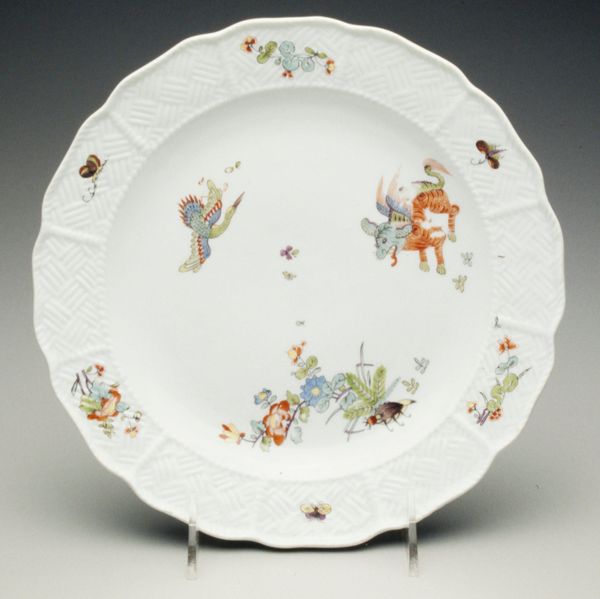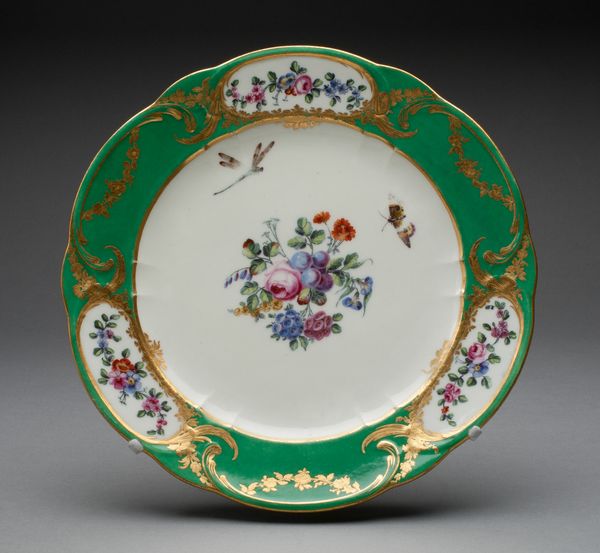
painting, ceramic, porcelain
#
painting
#
ceramic
#
porcelain
#
ceramic
#
decorative-art
#
rococo
Dimensions: Diam. 26.7 cm (10 1/2 in.)
Copyright: Public Domain
This plate was made in Vienna by the Du Paquier Porcelain Manufactory, sometime between 1718 and 1744. European porcelain was, at this time, a relatively new material, and the Du Paquier factory was only the second to produce it, outside of Meissen in Germany. Porcelain is a high-status material made from refined white clay, and decorated with colorful pigments. Its preciousness stems from the fact that the raw materials are quite difficult to process, and the high-temperature firing requires skill and care. Here, we see it formed into a plate with a complex scalloped rim, edged in gold, and decorated with an appealing design. It depicts fruits, flowers, and, unexpectedly, a small rodent. The artist has applied enamel decoration over a glaze, in a naturalistic style reminiscent of botanical illustration. The plate is precious because of the amount of labor it represents, and the material from which it’s formed. Considering its materiality, making, and context allows us to understand its full meaning and challenges traditional distinctions between fine art and craft.
Comments
No comments
Be the first to comment and join the conversation on the ultimate creative platform.













